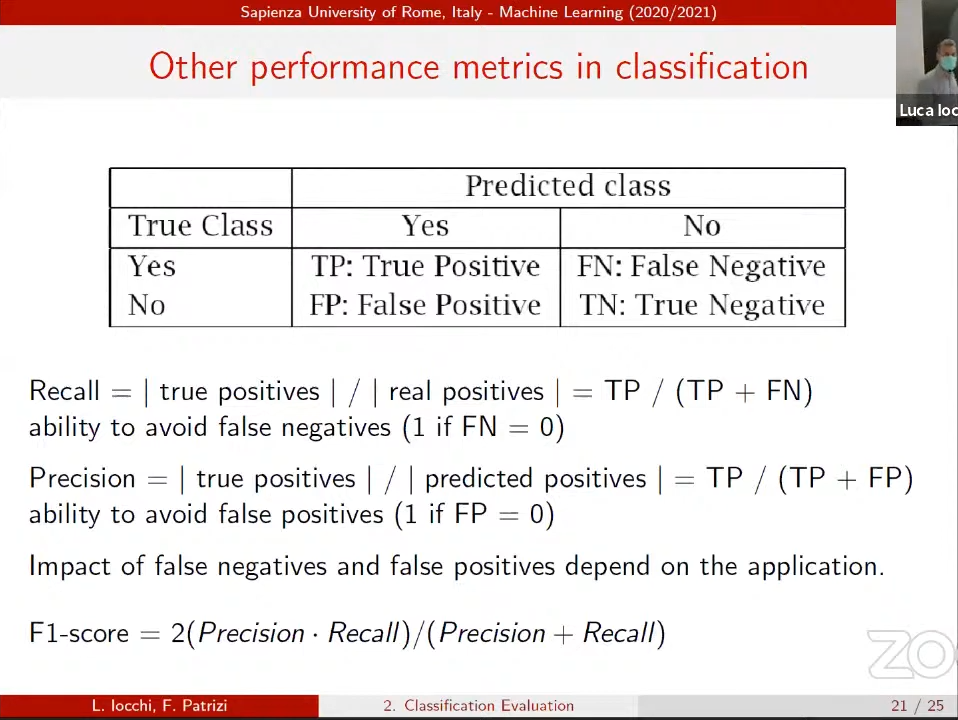02 - Performance evaluation and classification
Overview
- Description:: Performance evaluation of ML is important, K-Fold Cross Validation is a general prototype method to evaluate classification problems, several metrics can be used, estimation is very useful also during the execution of an algorithm
RIGUARDARE I PRIMI 25 MINUTI dove fa il riassunto!!!
- We have a H hypotetical space
- it’s too generic! So we restrict to H’
- Now we have H’ → H : it is called language restriction - here we can take h*, that is the “best possible hypotesis” (known as search bias) WE MAKE A RESTRICTION!
The matter
h*(x’) = f(x’)
but we don’t know f(x’)!
Measure the performance of my solution
Errors
True error
Probability that extracting one sample from the input I have a mistake between the hypotesis the solution I am measuring and the true value of the function.
This our target error that it is impossible to compute since we don’t know f(x).
Sample error
Defined on a dataset S, a set of samples for which we have both input and output, so for given S we can actually define sample error as an error that is the number of errors divided by the size of S.
We can compute this one! but only on a small data sample.
It is important that sample error is a good approximation of the true error.
We can guarantee this by finding a bias, that is computed as the difference between E(errorS(h)) and errorD(h). We are looking for the 0 value. To be highly guaranteed, the bias should be 0!
- E[errorS(h)]: This represents the expected (average) error of the model h across all possible training datasets S. In other words, it’s the average error that h would make when trained on different subsets of the data S.
- errorD(h): This represents the error of the model h on a specific test dataset D. It’s the error that h makes when applied to the specific dataset D.
Too much data doesn’t approximate in a good way, so we can get a trade off: 2/3 for training, 1/3 for testing.
Overfitting
hypotesis h to H overfits training data if there is an alternative hypothesis h’ t H such that errorS(h) < errorS (h’) and errorD(h) > errorD(h’)
K-Fold Cross Validation
- repeats validation several times
- take all dataset and split into several parts
- for each part, I use that part as test set and the remaining as training
- the output of the error is the average of the errors
Not always we want to use unbalanced datasets! ex. classification problem +,-
this slide is also super important! exam question!
This one is for balanced datasets

There also be a Confusion Matrix: for each subset, I mark when a subset is recognized as another one.
